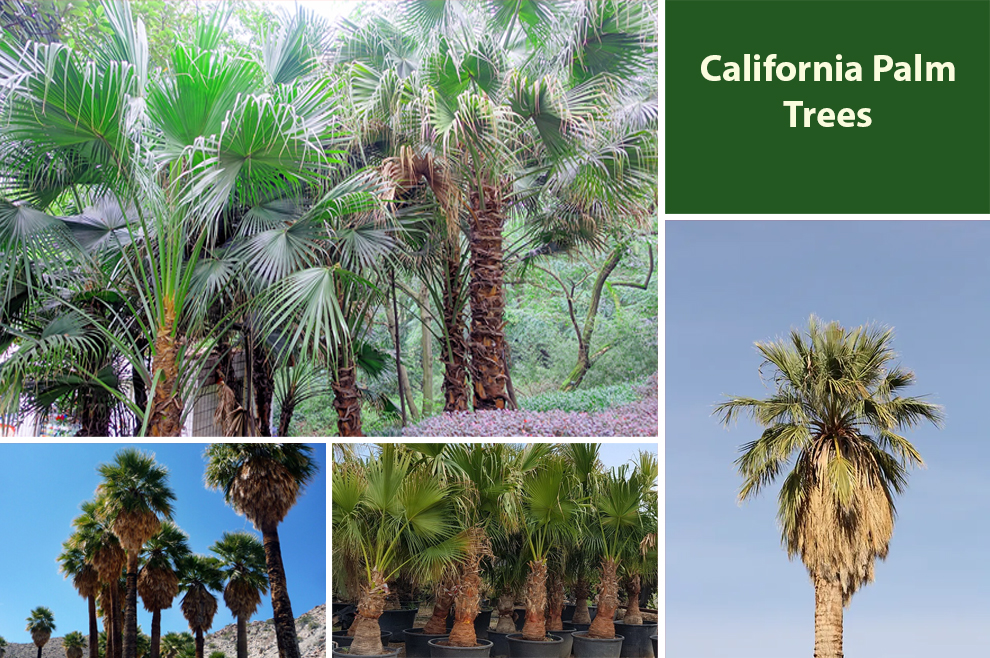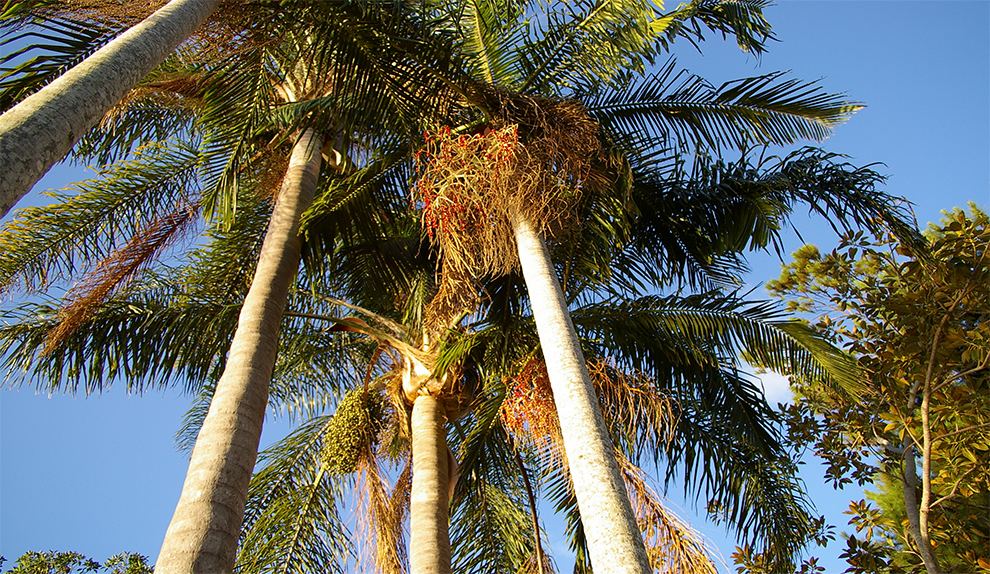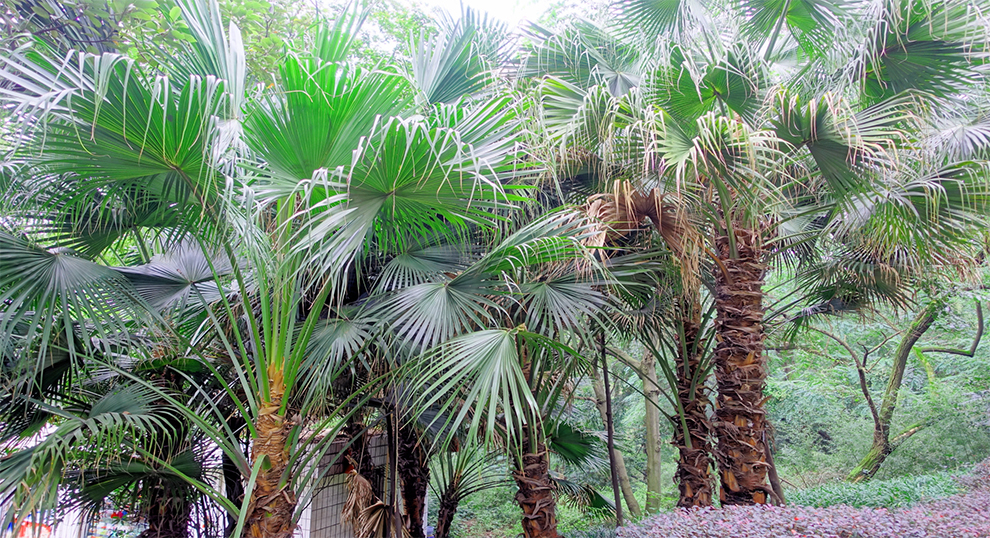Different Types of California Palm Trees & Their Features
The popular varieties of palm trees found in California are the Mexican Fan Palm, Pindo Palm, Sago Palm, King & Queen Palm, etc. In addition, there are some native varieties like California fan palm, California Date palm, California Livistona, and a few hybrids.

From the sun-kissed beaches of the Pacific Coast to the arid deserts of the southwest, these iconic California palm trees grace the Golden State with their elegance and beauty.
Native species, such as the California Fan Palm and California Livistona, stand tall as symbols of resilience in harsh environments, while exotic varieties like the Mexican Fan Palm and Canary Island Date Palm adorn urban landscapes with their tropical charm.
Join us on a journey through the fascinating array of palm trees found in California, each contributing to the state’s enchanting scenery and enriching the lives of its inhabitants.
Different Types Of Palm Trees In California
- California Fan Palm
- Mexican Fan Palm
- Canary Island Date Palm
- King Palm
- Queen Palm
- California Livistona
- Pindo Palm
- Sago Palm
Palm trees found in California encompass a variety of species, each contributing to the state’s iconic landscapes. Some of the most popular palm trees in California and their common characteristics are as follows:
1. California Fan Palm (Washingtonia filifera):
-
- California palms are tall and slender with a single, gray-brown trunk.
- They have large, fan-shaped fronds with thread-like fibers between leaf segments.
- They are drought-tolerant and prefer full sun exposure.
- Small, dark fruits (dates) are produced.
- Often found near water sources, in oases, and canyons.
2. Mexican Fan Palm (Washingtonia robusta):
-
- These are taller and more slender compared to the California Fan Palm.
- Large, fan-shaped fronds with a silvery-green color adorn these trees.
- Drought-tolerant and commonly used for ornamental purposes.
- Frequently planted along streets and in urban areas.
3. Canary Island Date Palm (Phoenix canariensis):
-
- Canary Island Date palm is large and stately with a robust trunk covered in diamond-shaped leaf scars.
- These California palm trees have arching, feather-like fronds with spiny leaflets.
- Produces large clusters of edible dates.
- Frequently used for ornamental landscaping.
4. King Palm (Archontophoenix cunninghamiana):

-
- Graceful with a smooth, green trunk and a crown of drooping, feathery fronds, King palms are a beauty.
- They produce orange to red fruit clusters.
- Not native to California but they are widely planted for their tropical appearance.
5. Queen Palm (Syagrus romanzoffiana):
- Queen palm is tall with a straight, slender trunk and a crown of arching, pinnate fronds.
-
- It produces orange fruit.
- Commonly used in landscaping due to its elegant appearance.
6. California Livistona (Livistona decipiens):

-
- This native variety is slender with a gray-brown trunk and fronds that have drooping tips.
- Blue-green to green foliage.
- It is slow-growing and well-suited for gardens and urban settings.
7. Pindo Palm (Butia capitata):
- Pindo palm is medium-sized with a stout trunk covered in old leaf bases.
- Feather-like, arching fronds with a blue-green color.
- It produces clusters of edible orange to reddish fruits.
- Cold-hardy and adaptable to various soil types.
8. Sago Palm (Cycas revoluta):
- It is not a true palm, but commonly called a “palm” due to its appearance.
- Sago palm is low-growing with a stout, woody trunk and feathery fronds.
- It is also a dioecious plant with male and female cones on separate plants.
- It is grown as an ornamental plant in gardens and containers.
You might also like to know about Palm Trees in – Arizona | Hawaii | Miami | Texas | San Diego | South Carolina| Alabama| Australia| Brisbane
Which Are The Palm Trees Native To California?
Some of the native palm trees to California, along with their growing conditions and characteristics:
| Palm Tree Name | Scientific Name | Growing Conditions | Characteristics |
| California Fan Palm | Washingtonia filifera | – Full sun exposure | – Tall and slender with a single, gray-brown trunk |
| – Well-drained soil | – Large, fan-shaped fronds | ||
| – Drought-tolerant | – Small, dark fruits (dates) | ||
| – Can tolerate low temperatures briefly | – Typically grows near water sources |
| – Commonly found in oases and canyons | |||
| California Date Palm | Washingtonia robusta | – Full sun exposure | – Taller and more slender than W. filifera |
| – Well-drained soil | – Crown of large, fan-shaped fronds | ||
| – Drought-tolerant | – Smaller fruits compared to W. filifera | ||
| – Can tolerate brief cold spells | – Often cultivated as an ornamental palm |
| – Frequently used in landscaping | |||
| California Livistona | Livistona decipiens | – Partial shade to full sun | – Slender palm with a gray-brown trunk |
| – Well-drained soil | – Fronds have drooping tips | ||
| – Regular watering, but not excessive | – Blue-green to green foliage | ||
| – Cold-hardy and can tolerate frost | – Slow-growing palm |
| – Attractive in gardens and urban settings | |||
| California Washingtonia hybrid (Mexican Fan Palm) | Washingtonia | – Full sun exposure | – Fast-growing, tall palm with slender trunk |
| filifera x W. robusta) | – Well-drained soil | – Large, fan-shaped fronds with silvery-green color | |
| – Drought-tolerant | – Cold-hardy and more adaptable than parent species | ||
| – Can tolerate low temperatures briefly | – Often planted along streets and in urban areas | ||
| – Grows well in coastal and inland regions |
Which Are The Tall Palm Trees In California?
Here are all the tall palm trees found in California:
- California Fan Palm (Washingtonia filifera)
- California Date Palm (Washingtonia robusta)
- Canary Island Date Palm (Phoenix canariensis)
- King Palm (Archontophoenix cunninghamiana) – While not native to California, it is commonly planted and can grow tall in the state.
- Queen Palm (Syagrus romanzoffiana) – Like the King Palm, it is not native to California but is widely planted and can grow tall.
These are the tall palm trees commonly found and cultivated in California, contributing to the state’s diverse and beautiful landscapes.
Related: Palm Tree Growth Rate | Palm Tree Lifespan | Different Types of Palm Trees
Where Did The Palm Trees In California Come From?
The California palm tree species have diverse origins. Some, like the California Fan Palm and California Livistona, are native to the state.
Others, such as the Mexican Fan Palm and Canary Island Date Palm, were introduced by humans for ornamental and landscaping purposes.
Palms from various regions worldwide were brought in through the horticultural trade, historical plantings, and agricultural use.
This mix of native and non-native species contributes to the wide array of palm tree landscapes that grace California’s scenery.
